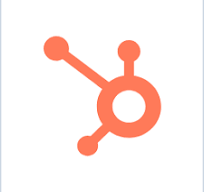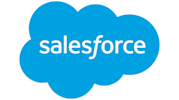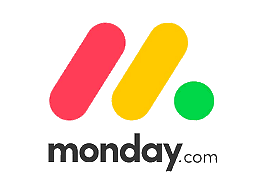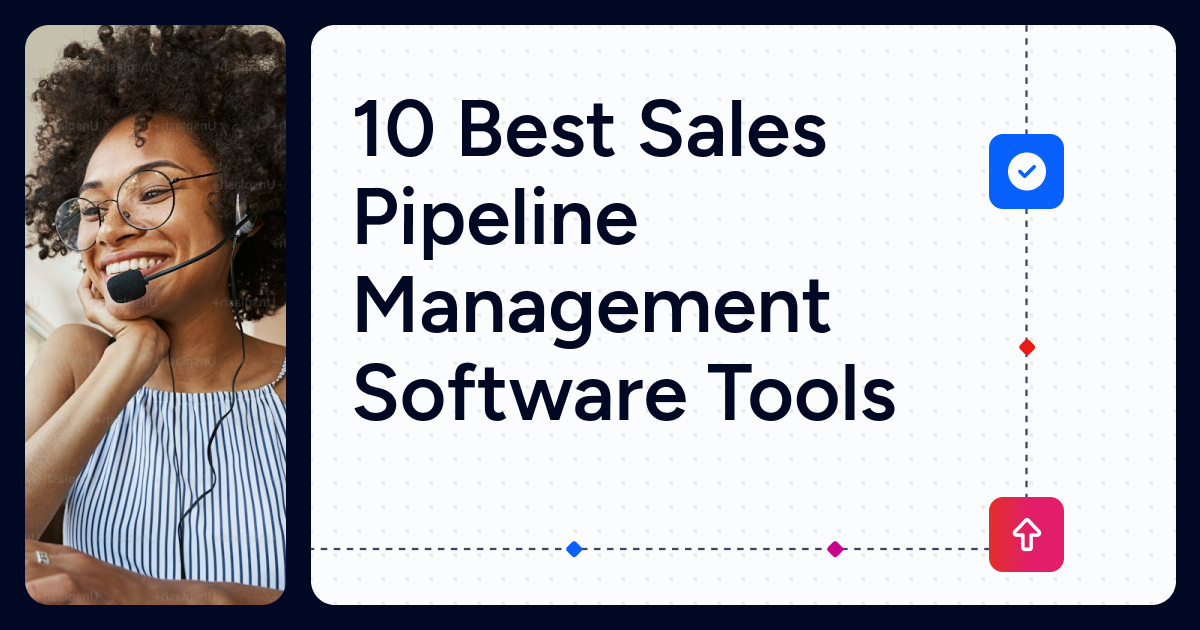Every high-performing team has one thing in common: pipeline clarity.
Whether you're running a lean outbound engine or a complex enterprise motion, spreadsheets don't scale. You need tools built to track every deal, prioritize next steps, and surface what’s working (and what’s not) before the quarter slips away. The best sales pipeline management software tools do exactly that.
What Is Sales Pipeline Management?
Sales pipeline management means tracking every opportunity as it moves from first touch to closed-won. That includes the entire lifecycle: prospecting, qualification, proposal, negotiation, and closing.
When done right, pipeline management gives go-to-market (GTM) teams a clear picture of how deals are progressing, where friction can complicate things, and what to fix right now. That clarity doesn’t happen with manual updates or buried email threads. It happens with software purpose-built to manage sales CRM pipeline management at scale.
Why Pipeline Management Software Matters
In a world where every rep is drowning in tasks and every manager is chasing clean data, the right pipeline tool brings structure and speed. It gets your team aligned, your data tight, and your forecasts more than just gut guesses.
Here are just a few reasons to invest:
More speed, less drag. AI sales automation software reduces manual entry and flags when deals stall, freeing reps to focus on selling rather than admin. The average rep already loses nearly two days a week to non-selling tasks.
Cleaner prioritization. Sales CRM pipeline management platforms surface which accounts matter most.
Smarter action. Integrated intent data shows which leads are heating up, not just who opened an email.
Cross-functional clarity. Shared pipeline views connect sales, sales development representatives (SDRs), and Revenue Operations (RevOps) around the same deal flow.
Reliable forecasts. No more last-minute surprises when stage discipline and data hygiene are dialed in. The best equipped teams land within 5% of their commit, though only around 15% of organisations achieve this.
Pipeline isn’t about visibility for visibility’s sake. It’s about knowing which deals to push, when to push them, and why.
Understanding Pipeline Management Stages
Every sales team uses slightly different stage labels, but the core flow stays the same:
Prospecting
Qualification
Proposal or Solution Design
Negotiation
Closed-Won or Lost
Each of these stages carries weight. If too many deals are stuck in qualification, something’s off. It could be bad leads, unclear criteria, or poor follow-up. Sales leaders who monitor conversion rates by stage identify problems early and act fast.
How to optimize pipeline flow
In prospecting: Filter tighter — don’t let unqualified leads clog the top of your funnel
In qualification: Use frameworks such as MEDDIC to force consistency
In proposals: Track objections and backslides to sharpen your pitch
In negotiation: Flag deals aging beyond the norm and intervene
Across all stages: Run regular pipeline reviews, with daily checkins for reps and weekly meetings for leaders
Pipeline management isn’t a one-time build. It’s a daily discipline.
Must-Have Features in Sales Pipeline Management Tools
The best sales pipeline management software tools all share five key features:
1. Visual pipelines
Reps need to see where their deals are, fast. Tools that offer drag-and-drop boards or Kanban-style views make it easy to track momentum and flag bottlenecks.
2. Automation and AI
Modern pipeline software doesn’t just display deals. It moves them forward. The best platforms layer in AI sales automation software that triggers follow-ups, updates stages, and alerts reps when accounts show buying signals.
3. Deep integration
A pipeline tool is only as good as the data it connects to. Seamless integration with your CRM, enrichment data, marketing automation, and quoting systems is non-negotiable.
4. Forecasting and analytics
From stage-by-stage conversion rates to velocity metrics and win-rate trends, pipeline tools should give RevOps leaders the analytics they need to model outcomes and course-correct in real time.
5. Customization and scale
No two sales motions are the same. The right platform lets you tailor fields, stages, and workflows without breaking when your team doubles in size.
How to Choose the Right Sales Pipeline Management Tool
Start with a comprehensive audit of your existing process.
Where is your pipeline leaking?
What tasks are manual and slowing you down?
Where is data falling apart?
How confident are you in your forecast?
Use those answers to prioritize features. Then compare tools on their pipeline UX, automation depth, integration ecosystem, onboarding friction, and support quality.
Don’t just rely on vendor promises. Check real-user feedback on platforms such as G2 and TrustRadius. Look for comments on adoption rates, ROI, and how long it takes to see value.
The 10 Best Sales Pipeline Management Software Tools
Here are the top platforms revenue teams are using to manage pipeline in 2025:

1. ZoomInfo
ZoomInfo goes beyond contact data. It gives reps direct access to buyer intent, account activity, and AI-driven workflows, so they can move faster and close more. It’s best for high-growth GTM teams that need data-backed pipeline clarity
If pipeline speed and early signals matter, ZoomInfo delivers both backed by real data, not hunches.
Sellers using ZoomInfo saw win rates jump from 32% to 46% and deal size grow by 40%. The shift came from faster engagement, cleaner data, and sharper targeting. Enterprise teams saw even bigger gains. Deal sizes nearly doubled, and net revenue retention climbed 35% after adopting ZoomInfo’s GTM Intelligence Platform.
Key strengths:
AI-enriched data and intent signals to prioritize outreach
Real-time alerts for account activity, hiring signals, budget changes
Seamless CRM sync and deal-stage updates
Integrated workflow automation to reduce manual tasks
Built-in pipeline hygiene tools such as deduplication and enrichment
ZoomInfo isn’t just a data platform. It’s pipeline intelligence, built into the flow of work.

2. HubSpot Sales Hub
HubSpot’s Sales Hub combines CRM, pipeline views, and automation. Its drag-and-drop boards, custom stages, and easy workflows make it suitable for midmarket orgs. Useful for growing teams that want an all-in-one CRM with solid pipeline tools.
Key features:
Unified pipeline and CRM view
Automated deal progression and follow-ups
Forecast dashboards
Native integration with marketing and support hubs

3. Pipedrive
Pipedrive focuses purely on pipeline. Its visual layout and simple automation stay manageable, even as teams scale. Pipedrive works for sales teams that want simplicity and clarity.
Key features:
Kanban-style pipeline view
Automation for tasks and nudges
400+ app integrations

4. Salesforce Sales Cloud
Salesforce Sales Cloud is built for depth. It’s a fit for large orgs that need enterprise-grade flexibility across custom pipelines, layered forecasting, and a comprehensive tool ecosystem.
Key features:
Multi-layered pipeline views
Scenario modeling and forecast tools
Scalable integrations and add-ons

5. Freshworks
Freshworks CRM suits SMBs and growth teams that want pipeline tracking, lead scoring, and outreach in one place without the bulk of enterprise tools. It keeps things simple, with just enough automation to move fast.
Key features:
Freddy AI for predictive lead scoring and deal insights
Visual pipeline with drag-and-drop deal stages
Built-in phone, email, and chat for end-to-end outreach

6. Keap
Keap suits small teams combining sales and marketing. It offers basic pipeline tools and simple workflows to centralize GTM efforts.
Key features:
Pipeline dashboard with automation
Post-sale follow-up workflows
Built-in email and landing page tools

7. Monday.com Sales CRM
Monday.com connects pipeline tracking to projects and tasks. It fits teams that want sales activity tied into broader work management.
Key features:
Customizable pipeline boards
Task and project integration
Built-in collaboration tools

8. Close
Close fits teams that move fast and work directly from their CRM. It combines pipeline tracking with built-in calling, SMS, and email to keep everything moving.
Key features:
Simple deal flow views
Built-in outreach channels
Follow-up and activity automation

9. Copper
Copper integrates tightly with Gmail, Calendar, and Google Contacts. It suits teams that work primarily out of Google Workspace.
Key features:
Google-native pipeline tracking
Auto-logging of activity
Forecast dashboards

10. Insightly
Insightly combines CRM, pipeline tracking, and reporting in one platform. It’s geared toward SMBs that want to keep things consolidated.
Key features:
Custom pipelines
Automation for deal flow
Reporting and analytics built in
Pipeline Is the System That Predicts Revenue
The best sales pipeline management software tools aren’t just about better visuals. They’re about better decisions, faster action, and more control over outcomes.
If you need clean data, signal-based prioritization, and sales execution tied directly to market behavior, ZoomInfo leads the pack. But whichever platform you choose, make sure it does three things:
Matches your sales motion
Supports automation and clean handoffs
Delivers clear reporting for reps and leaders
Don’t buy on features. Buy on what moves deals forward.
Before rollout, define what success looks like. Fewer stalled deals? Shorter cycles? Higher win rate? Let that steer your decision. Get RevOps in early, test with a real team, and then scale what works.
Because pipeline isn’t theory. It’s your number, your forecast, your plan. Treat it like it matters.

